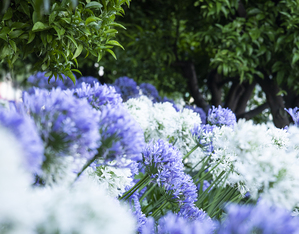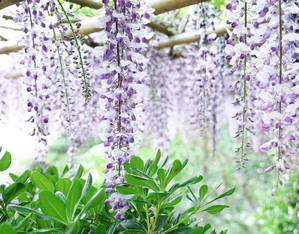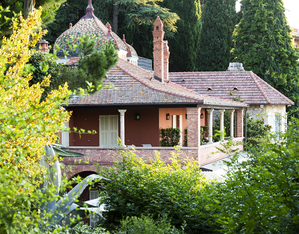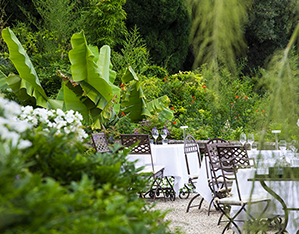In the late 19th century, this part of the coast was popular with an English community that sought escape from the strictures of Victorian life. The Gardens at Villa della Pergola explode in intense Mediterranean colours, themed plants and valuable collections spread over terraces.
Built in the late 19th century and overlooking the sea, the Gardens of Villa della Pergola are a rare example of an Anglo-Mediterranean park whose entire 22,000 m original extension has survived to the present day. Visitors may today admire the harmony of its Mediterranean vegetation, many rare plants and evocative, exotic flora. In 1875, General William McMurdo purchased the first part of the property, which had previously belonged to the Counts of Lengueglia. After restoring the small building already on site, McMurdo commissioned Domenico Gorlero to design a large and eclectic Villa, with loggias and bay windows opening onto gardens conceived as a continuation of the residence. Olive trees, citrus and carob trees were added to the Gardens’ pre-existing palms, cypresses and decor including giant antique jars, spread across a number of terraces supported by dry stone walls and embellished with numerous outlooks over the sea and mountains. The General was involved in the design; the chief gardener, however, was his wife Susan Sarah Napier, who had long resided in the East. In 1903, the property was acquired by Sir Walter Hamilton Dalrymple who, according to writer William Scott, made it “a worthy rival to the Mortola Gardens”, adding new plants that included many climbing roses, creating a ruined “folly”, and opening the Gardens to the public. In 1922, Daniel Hanbury, son of Thomas (who had created the Gardens at Mortola), acquired the gardens, enriching them with cacti, cycads and eucalyptus trees. After falling into a long period of decline and neglect, in 2006 the Gardens were saved from a speculative building project and underwent meticulous restoration under the watchful eye of Paolo Pejrone, with the onus on salvage and conservation. Working with Silvia Arnaud Ricci, Peirone has established esteemed botanical collections of wisteria and agapanthus, as certified by the Italian Society for Horticultural Science (SOI).





